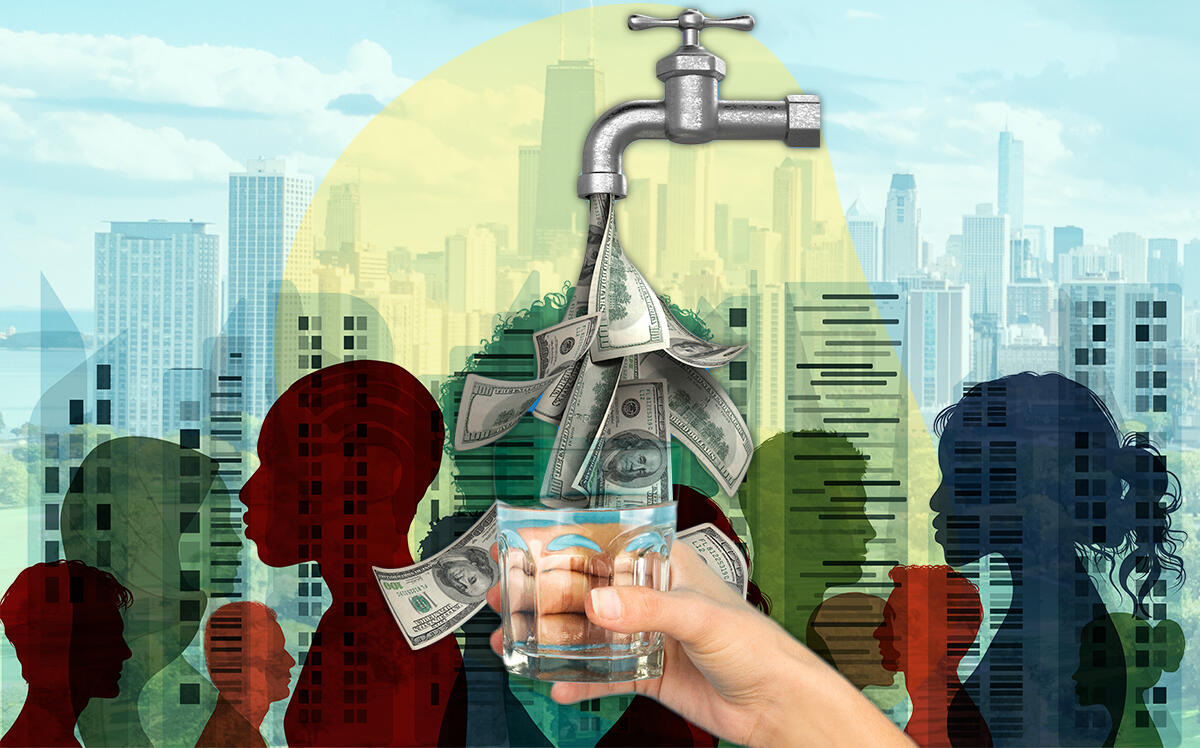Trending
Chicago’s minority communities are billed far more for less water
Residents of the city’s majority Black neighborhoods have 10 times the water debt of those in white neighborhoods

Racial inequity is baked into Chicago water bills.
Average residents in the city’s majority Black and Hispanic neighborhoods pay about $100 more a year more than those in White areas, even though they consume less, according to a report from the Metropolitan Planning Council and Elevate, an energy equity group.
The Chicago Water Affordability Analysis found the average water bill in majority Black neighborhoods was $905 per unit and $899 in mostly Hispanic districts, compared with $804 in mostly white neighborhoods. The report examined data from 2015 to 2020. The Chicago bills also include fees for sewage and garbage as well as taxes and penalties.
It’s “a city-wide problem,” Elevate’s Athena Gore told WBEZ, which reported the analysis earlier.
“No one is getting away from the fact that water rates are going up,” she said. “It’s just having a more severe impact on low-income communities and also Black and Brown communities. We’re looking at another version of income gap, racial income inequality, and how it’s playing out specifically in the water sector.”
Driving the inequity are higher charges for non-metered accounts,which are more likely in minority areas, as well as non-water charges and snowballing debt. In the past five years, the average bill for non-metered accounts rose by about $350, compared with $56 for metered accounts. In 2019, non-metered customers were paying an average of $500 more. By April 2020, half the total amount owed to the city for water bills came from new charges on the most recent bill, and half came from unpaid balances.
Residents in Black neighborhoods have on average 10 times the water debt than those in white areas and were home to almost half all the accounts charged a penalty in 2019. The lowest income households in majority Black neighborhoods spend 19 percent of their income on water charges, compared with 4 percent for counterparts in white neighborhoods.
Non-metered customers also don’t get letters from the city warning them of possible leaks, like metered residents. The report said leaks aren’t the main driver for higher bills.
One South Side resident quoted in the report said they were not offered help from the city after receiving a $1,400 bill, despite having an average bill of $60.
“I said, I need some help paying this water bill, this water bill is $1,400,” she said, according to the report. “She said, ‘well, the only thing you can do is set up a payment plan.’ I didn’t feel like I should be setting up a payment plan because I didn’t feel like the bill was mine.”
The report recommends finding a safe way to reinstate the MeterSave program, suspended in 2019, to help homeowners install meters, according to WBEZ. It also says the city should expand the city’s Utility Billing Relief program, which helps eligible homeowners get a 50 percent discount on their water and sewer bills and qualify for debt forgiveness, WBEZ reported.




